Legs for the kitchen table: types and features
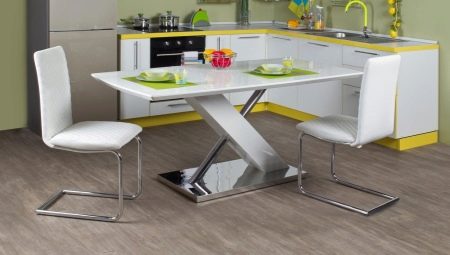
The quality and style of the dining table is determined by two components of this design - the table top and the underframe. Today, each customer has the opportunity to purchase them separately. By successfully matching the legs to the table top, you can get an elegant, stylish and reliable table. The article will tell you about the types of supports (legs) for tables, materials for their manufacture and the intricacies of making the right choice.
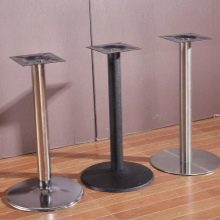
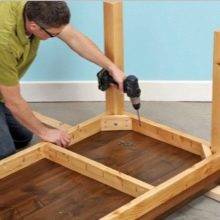
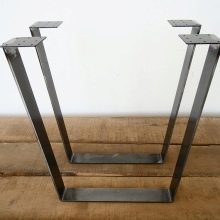
Varieties
The dining table supports can have 1, 2, 3 or 4 legs. A single base must be dimensioned to provide stability to the worktop and to ensure the safety of the entire structure. The 2-leg options allow you to comfortably place your feet at the dining table. It is the perfect solution for modern kitchens.
The 3-leg solutions are ideal for square, circle or triangle worktops... The three legs are capable of supporting both small and large structures. 4 supports - traditional base. This option is considered the most convenient and reliable. A worktop of any shape and size can be placed on it.
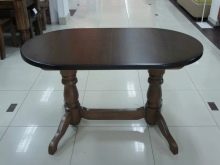
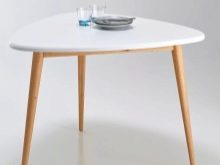
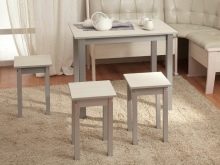
The base for the kitchen table is of several types.
- Traditional. These legs do not have the ability to adjust the height. These are the most uncomplicated models that are distinguished by simplicity of design, straight lines and financial affordability.
- Telescopic... These options have a special mechanism, thanks to which you can change the height of the table top.
- Design... Such solutions cannot be found on the free market. Most often they are made to order according to individual sketches.
Depending on the model, the supports are square, round, rectangular, straight or curved.The assortment is large, so every hostess can easily choose the optimal legs for any tabletop and interior style.
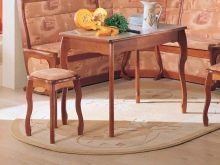
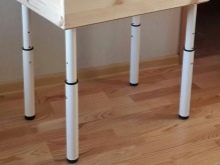
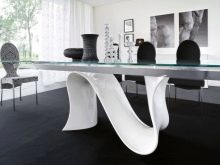
Materials (edit)
The legs for the kitchen table can be made of various materials. Consider the features of each.
Metal
Metal bases are carried out made of stainless steel, steel, chrome iron or aluminum. Aluminum and iron structures have the most democratic cost. There are also cast-iron underframes. They are the most reliable and durable, but they are heavy. These supports are capable of supporting massive stone countertops.
The surfaces of the metal legs are glossy, matte or painted. There are also chrome and tinted variations. Products can be forged or cast. The first ones look original and aesthetically pleasing, but they are expensive. The latter have simpler forms and are cheaper.
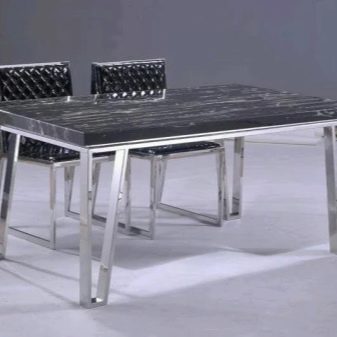
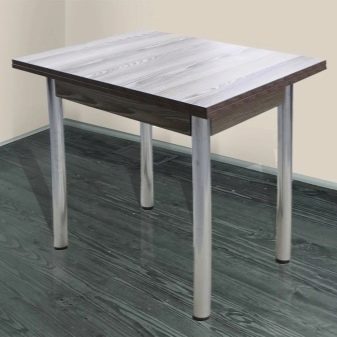
Wood
For the production of wooden bases, oak, pine, walnut, ash and other wood species are used. To protect such legs from high temperature and humidity, specialized compounds and impregnations are used. Wooden underframes look stylish and will match any type of countertop.
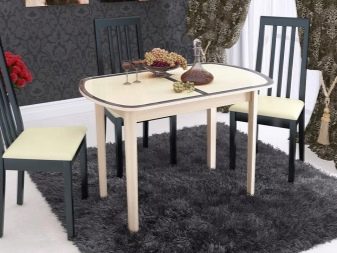
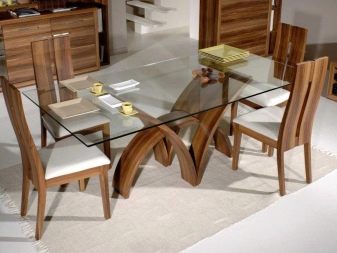
Plastic
Plastic table legs have gained popularity due to their financial affordability. They are suitable for lightweight countertops made of the same material. Due to the unreliability, it is risky to install massive and weighty tables on them.
When choosing plastic underframes, you need to pay attention to the thickness of the plastic - the higher the value, the safer the design will be. It is better to refuse to purchase thin products.
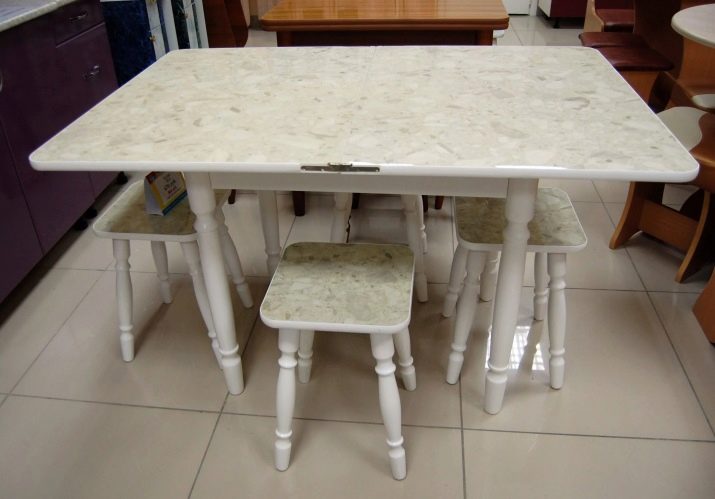
MDF
The undercases for the kitchen table made of this material are distinguished by accessibility, aesthetics and high performance. The surface of MDF is covered with various decorative films or plastic. This “shell” increases the durability of the products and makes the support easier to maintain.
The assortment of MDF legs is extensive: Available in solid colors in a huge range of colors, products that imitate natural materials (such as wood or stone), and a rich selection of textures.
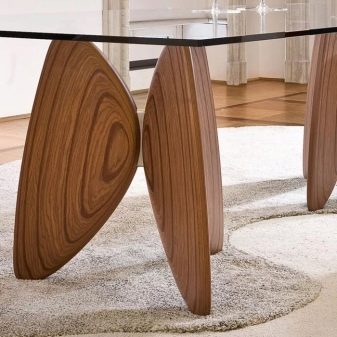

Glass
Glass countertops are usually chosen for low-set countertops. Tempered glass is durable and reliable. Depending on personal preference and tabletop design, you can choose matte, transparent, mirrored or colored legs.


Stone
Stone underframes are durable and durable. They are able to withstand the maximum load. However, they are not particularly suitable for kitchen interiors. Tables with stone elements in the structure, are very heavy, which will make it difficult to move them from one place to another.
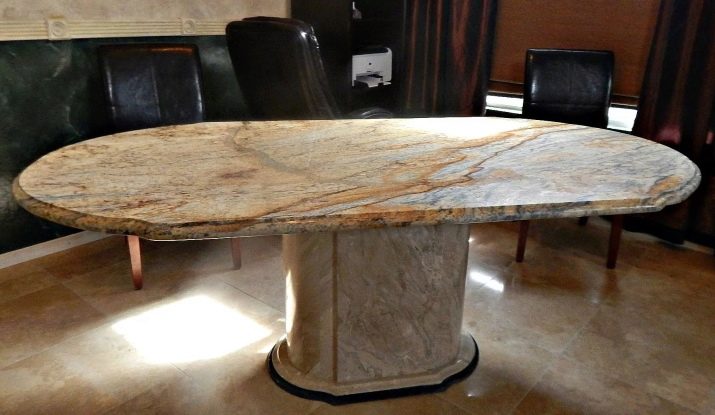
In order to assemble an exclusive and elegant table, it is recommended to select the base and table top from different materials. Their contrast will allow you to create original solutions for kitchens in any stylistic direction.
Selection rules
When looking for countertops for a countertop, it is important to consider the design features of these two components and their style. For example, for a round table top, 1 solid support is best. A single underframe can be round or square and have cross-sections along the entire length. Besides, the dimensions must be taken into account. Large tables will require appropriate legs to support heavy loads.
The underframe should be chosen in accordance with the design in which the interior of the kitchen is decorated. For classic styles, traditional wood models are fine. They will harmoniously fit into the space, add charm and elegance to the table. For minimalism and hi-tech chrome or plastic legs will do.
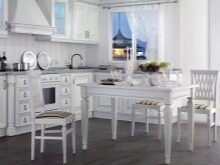
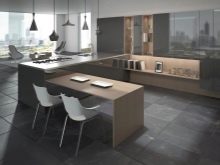

If in the future you plan to move the table frequently from one place to another, it is recommended to pay attention to the supports with rollers. If mobility is the main criterion, you can take a closer look at folding underfolds. If it is necessary to ensure maximum stability and safety of a bulky structure, the choice should be stopped on weighted legs made of metal (iron, steel, cast iron) or stone.
Not in the last place is the quality of the products. Not only external perfection will depend on it, but also the service life of the legs. Wooden structures must be carefully sanded and coated with varnish or other protective equipment. Glass products should be free of chips, cracks and abrasions. The quality of metal substrates is checked for the evenness and smoothness of welded joints.
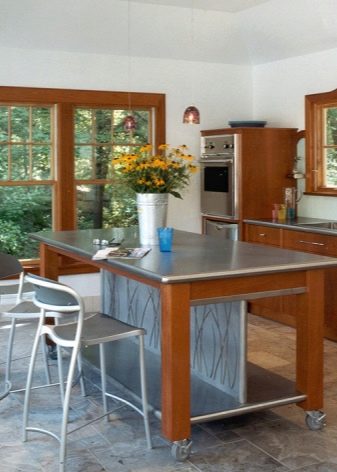
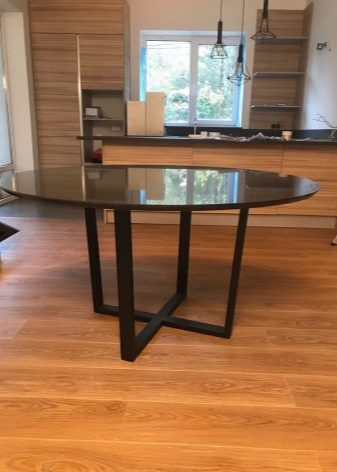
You will learn how to strengthen the legs of the kitchen table if they are wobbling in the video below.








